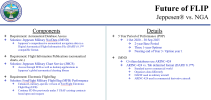With reference to the A-10, I get that the airframe is outdated, but I don’t think the mission is. I also think it is unusual that the AF proposes using a high end fighter for a low end fight - all that tells me is that Army infantry will be calling on rotary air support more and more. I’d also add that the AF is very wedded to maintaining near antique airframes like the F-15 and B-52…and yes they can still do the job as many claim the A-10 could.
I do not for the life of me understand why the USAF doesn't seem to want a mix of high and low-threat platforms. Your F-35s will last longer if the low-threat CAS scenarios can be covered by less expensive platforms to buy and operate in sufficient quantities to cover unexpected scenarios. Operational costs can go down, and high-end, gold-plated stuff lasts longer. But that argument falls on deaf ears, and I still don't know why.

